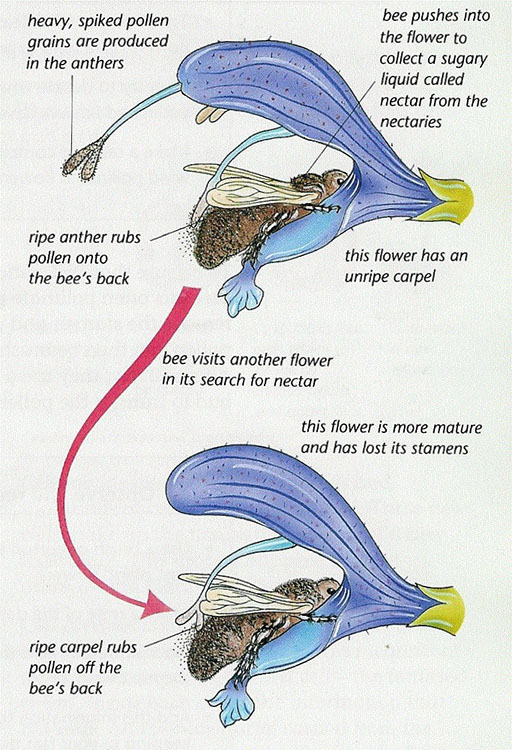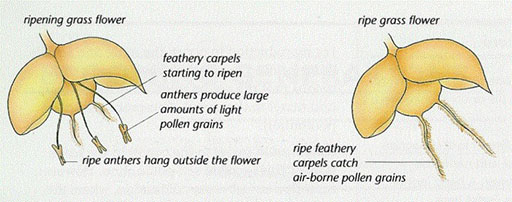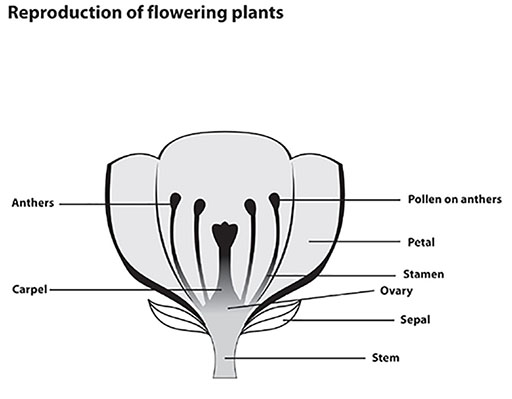Resource 2: Reproduction in flowering plants
![]()
![]() Background information / subject knowledge for teacher / Teacher resource for planning or adapting to use with pupils
Background information / subject knowledge for teacher / Teacher resource for planning or adapting to use with pupils
Flowers contain the reproductive parts of a plant – they produce the seeds from which a new plant will grow. Flowering plants reproduce by two special sex cells joining together. The male sex cell (pollen) joins with the female sex cell (ovum) to become the first cell of a new organism. This cell then divides to become two, then four, then eight … and so on until there are millions of cells in the seed. The seed then germinates and grows into a new plant.
The diagram shows the parts of a flower:
- The stamen is the male parts of the flower.
- The anthers, at the top of the stamen, contain thousands of grains of pollen.
- Each pollen grain contains a male sex cell.
- The carpel is the female part of the flower. At the bottom of the carpel is the swollen part – this is the ovary.
- The ovary contains several ovules.
- Each ovule is a female sex cell called an egg cell.
- Ovules are bigger than pollen grains – sometimes you can see them with a hand lens.
- Plants need help to get the pollen grains from the stamens to the top of the carpel of another flower of the same kind: this is cross-pollination. (Self-pollination is when this happens in the same flower.)
- In cross-pollinating plants, the stamens usually ripen to produce pollen before the carpels have fully developed so that self-pollination does not occur.
- Some plants use insects to help them pollinate. The insect, in search of food, is attracted to the flower. The pollen brushes onto the insect’s body and sticks. The insect then visits another flower and some of the pollen will rub off onto the carpel of the next flower.
- Flowers that use insects to help them pollinate usually have brightly coloured petals, scents and large sticky pollen grains.
- Some plants use the wind to help them pollinate. These plants usually have male and female parts that hang outside the flower. They are not usually brightly coloured and their pollen grains are small and light. Grasses are pollinated in this way.
- After pollination, a tube grows out of the pollen grain and down to the ovary.
- In the ovary, the nucleus of the male sex cell joins with the nucleus of the female sex cell – this is fertilisation.
- Fertilised ovules develop into seeds and the ovary changes to become a fruit.
Examples of pollination
Insect pollination

Wind pollinated plants

Resource 1: Looking at plants




